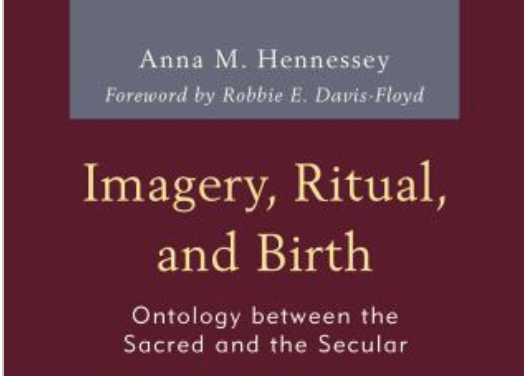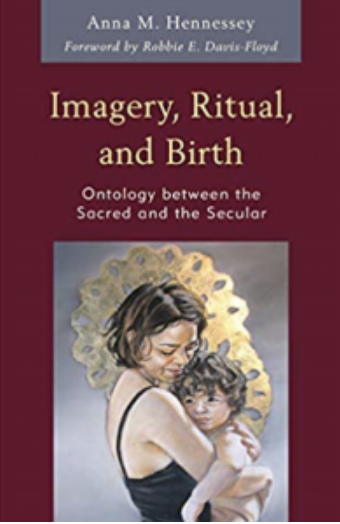Ann Duncan’s review of Imagery, Ritual, and Birth
Visualizing Birth caps of 2019 with Religious Studies professor Ann Duncan’s beautiful review of Imagery, Ritual, and Birth: Ontology Between the Sacred and the Secular for Reading Religion, a publication of the American Academy of Religion. The book includes extensive discussion of how art, imagery, and visualization are used in birth as a contemporary rite of passage.
Imagery, Ritual, and Birth
Ontology between the Sacred and the Secular
Review
Anna M. Hennessey’s Imagery, Ritual, and Birth: Ontology between the Sacred and the Secular uses the particular example of women’s engagement with images in birth as a means to both explore the ontological transformation of those objects and as a way to elevate birth to a subject worth of greater scholarly exploration. In that way, the book operates on two plains–one speaking to material religion and art as the focus of religious and spiritual reflection, and one speaking to the power of childbirth as a site for meaning making. Central to this book is the premise that birth provides an opportunity for exploring ontological transformation through attention to women’s engagement with imagery. More specifically, Hennessey charts a progression from a social understanding of an object as religious, to a view of the object as a tool used for visualization and the links in childbirth and, finally, a desacralization by the birthing woman as she contemplates its connection to birth in ritual.
To explore this progression, Hennessey begins with a chapter exploring the unequal treatment of birth and death in the Arts and Humanities and making a case for a reorientation towards birth as a site for scholarly exploration. She then dives into a case study of the Sheela-na-gig as a material example of ontological transformation in birth. Sheela-na-gig refers to a variety of medieval stone figures portraying women with exaggerated breasts and vulvas – interpreted by some as women in the act of childbirth. A figure utilized by women from the medieval period to the present, the Sheela-na-gig provides Hennessey with a case study for ontological transformation. The subsequent three chapters lay out those three stages of transformation: social ontology, secularization, and resacralization.
Hennessey ends the book with attention to the growing number of examples of art explicitly about birth that enable women to bypass the transformation henceforth described. Here she moves from ancient artifacts to recent and popular depictions of motherhood from Beyoncé to the work of contemporary artists like Kate Hansen to show how this work empowers women and validates a variety of experiences from healthy pregnancy to pregnancy loss. Modern imagery often needs no ontological transformation as the message and power of the depiction of pregnant, birthing, and nursing women more directly affects the viewer. This recent increase in such art underscores, according to Hennessey, the emergence of a new feminism that embraces and celebrates motherhood and birth as central to women’s empowerment.
Ripe with striking images of artifacts used as sacred objects in birth and often demonstrating explicit female and reproductive imagery, Imagery, Ritual, and Birth explores both art about birth and art used in birth to reinforce the power and significance of this rite of passage for understanding lived religious experience. Building on and amplifying the work of Robbie Davis-Floyd (who offers a Foreword to the book) on birth as a rite of passage and Andrea O’Reilly on matricentric feminism, Hennessey represents what she hopes will be a continually louder scholarly voice advocating for the centrality of motherhood, in general, and childbirth, in particular, as a site for scholarly inquiry into the human experience. The particular focus of Hennessey’s study and the multi-leveled argument she makes mean that her audience has the potential to be much wider than one might first assume. Scholars interested in religious art and artifact will find the discussion of shifting ontologies engaging and scholars of motherhood, birth, and women in religion will appreciate the careful attention to women’s subjective experience and the significance of the childbirth rite of passage. All scholars of religion would do well to heed Hennessey’s call to take seriously not only the experience of women generally but also the power and transformative potential of childbirth as a site of religious and spiritual meaning.
Ann W. Duncan is Associate Professor of American Studies and Religion and the Roxana Cannon Arsht ’35 Professor of Ethics and Leadership at Goucher College.

